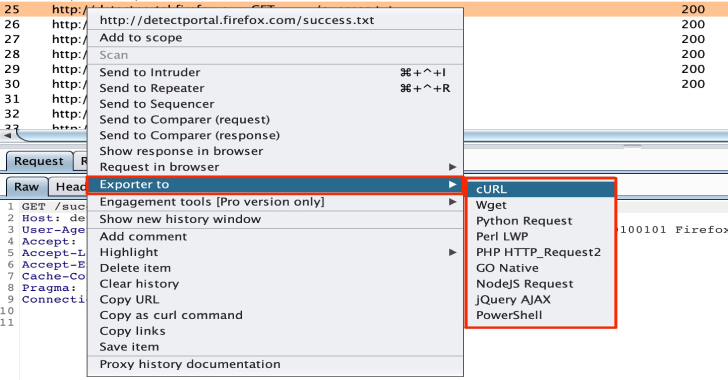What Are Next-Gen Security Technologies?
As businesses increasingly rely on remote access and distributed computing resources, their threat landscape grows. Advances in technology introduce new threats and vulnerabilities that are often invisible to traditional cybersecurity tools. In addition, traditional security tools often generate a large number of alerts, many of which are false positives, creating a burden for IT and security teams.
Next-generation security products eliminate false positives and provide tools to help classify threats using threat intelligence. They use advanced strategies to secure business endpoints and prevent unauthorized activity. Next-generation security commonly leverages machine learning and artificial intelligence to protect an organization, even in the face of sophisticated, evasive, or unknown threat vectors.
Static Application Security Testing (SAST)
Static Application Security Testing (SAST) tools examine an application’s codebase to identify vulnerabilities. This can help remediate security issues before deploying the application. SAST is a type of application security testing and is an integral part of securing web and cloud-native applications. SAST is possibly the oldest form of application security testing, working alongside many other tools and management services that provide continuous testing.
SAST is a “white box” testing technique – it looks into the inner workings of an application, and can reveal vulnerabilities down to the individual line of code. SAST supports this level of visibility by looking directly at the source code itself when the application is not running. This overlaps with more extensive static code analysis tools. SAST works in tandem with SCA (described below).
Static application security testing has several advantages and disadvantages compared to other application security testing methods.
Advantages include:
- SAST allows developers and security testers to explore the entire codebase of an application in a single test.
- You can test your application early in the software development lifecycle (SDLC) before your code is ready to compile or run.
Disadvantages include:
- SAST tools can only analyze static code and cannot test applications that are in testing or already in production.
- SAST can miss security contexts outside the codebase, such as secondary security tools and integrations with other applications or systems.
Because of these limitations, SAST tools are often used in conjunction with DAST and Interactive Application Security Testing (IAST) tools.
eBPF
eBPF is an innovative technology derived from the Linux kernel, which allows sandboxed programs to run directly within the operating system kernel. It is used to safely and efficiently extend the functionality of the kernel without changing the kernel source code or loading kernel modules.
Historically, operating systems have been ideal places to implement observability, security, and networking features due to the kernel’s authority to monitor and control the entire system. At the same time, the operating system kernel is difficult to evolve due to its critical nature and high requirements for stability and security. As a result, innovation at the OS level has been slow compared to features implemented outside the OS.
eBPF radically changes this formula. By allowing sandboxed programs to run within the operating system, application developers can run eBPF programs to add additional functionality to the operating system at runtime. The operating system uses a just-in-time (JIT) compiler and validation engine to ensure safety and execution efficiency, as if the program was compiled natively as part of the kernel. This has resulted in a wave of eBPF-based projects covering a wide range of use cases, including next-generation networking, observability, and security features.
eBPF is now widely used in cloud native environments. It provides high-performance networking and load balancing in modern data centers, with low-overhead, highly granular security capabilities. eBPF helps organizations achieve better observability in complex distributed environments, and proactively enforce runtime security for applications and containers.
Extended Detection and Response (XDR)
XDR is a SaaS-based threat detection and incident response tool that reduces complexity and cost by integrating multiple security products into a unified platform. The result is a tool that extracts data from your IT environment, both on-premises and in the cloud, making it easier to identify and investigate threats on the network.
XDR allows organizations to reduce the number of low-quality alerts and false positives, by correlating event information from different data streams and combining it with threat intelligence and contextual data. It can detect both known and unknown attacks in real time, automating investigation to save time for security teams.
XDR also uses proactive technologies, such as machine learning and behavioral analytics, to identify new or sophisticated threats, and trigger automated security responses, making it possible to more effectively identify and mitigate attacks.
Software Composition Analysis (SCA)
Today’s software applications rely heavily on open source components. Software Composition Analysis (SCA) is a process that automates control over open source software, enabling risk management, security scanning, and license compliance. SCA helps developers ensure that the open source components they include in their applications meet basic security standards and pose no risk to their organization.
Software configuration analysis tools can identify open source security risks and vulnerabilities in third-party components, as well as provide license and vulnerability information for each component. More sophisticated tools can automate the entire open source selection, approval, and tracking process, saving developers valuable time and significantly improving accuracy. SCA tools are increasingly becoming an integral part of the application security portfolio.
Conclusion [Q2]
In conclusion, next-generation security technologies such as software composition analysis (SCA), extended detection and response (XDR), static application security testing (SAST), and extended Berkeley Packet Filter (eBPF) are becoming increasingly important tools for protecting organizations from cyber threats.
These technologies use advanced techniques such as artificial intelligence, machine learning, and data analysis to identify and prevent security threats in real time. By adopting these technologies, organizations can improve their security posture and reduce the risk of costly security breaches.












%20Works.png)



.webp)
.webp)